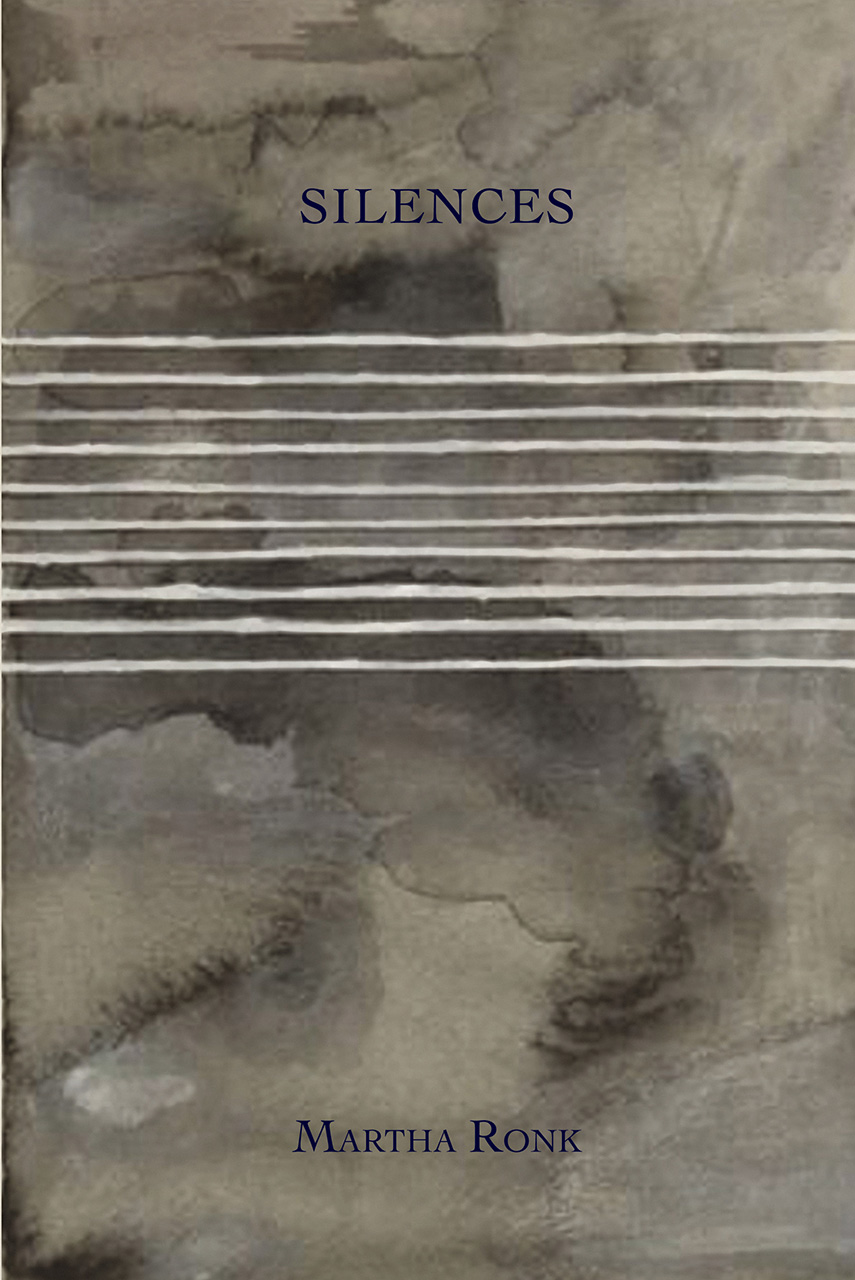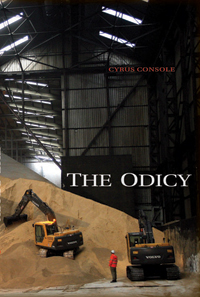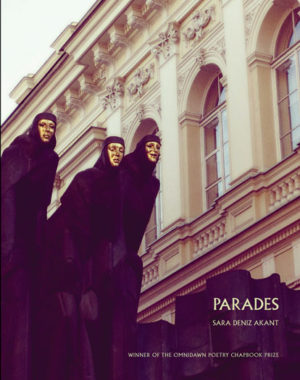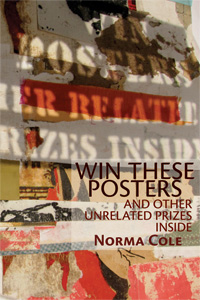Description
Within the visual arts of painting and photography, Martha Ronk finds an undeniable presence lurking: silence. This character slips into pauses, hides between images, and expertly evades the grasp of language. Ronk shows us that what is hidden just off screen in these images might just be the force that gives them power. The poems in Silences seek possibilities of how to form language from a phenomenon that so earnestly resists it. Rather than coax silence out of hiding, Ronk’s poems respond to its mysterious presence through questions and conjecture.
These poems endeavor to give a much-deserved voice to silence, addressing the power of what is not seen. While silence remains perpetually out of reach, Ronk invites us to follow the language that creeps up to its edges. The poems in this collection form an inquiry that moves through the presence of silence and reveals insights into the character of the visual art in which it lives.
Ronk has always sharply angled her gaze toward the world’s unlikely phenomena, revealing and reveling in the heat she detects underneath. In Silences she searches for and settles in pauses, stops, breaks, in-between spaces . . . She takes inspiration from, and writes about, great artists of interstitial spaces, such as Samuel Beckett, John Cage, Rene Magritte, Mark Rothko, and Vincent van Gogh, and meditations on the practice of ekphrastic art. . . . Ronk gets as close as one can, in these new poems, to dancing on the pinhead of now.
Craig Morgan Teicher, author of We Begin in Gladness: How Poets Progress
These poems seek, in humble and honest ways, all that falls back into, or refuses to emerge from, the inexpressible rooted silently inside the givens of our lives—not to break the secret open, but more simply, more wondrously, to admit it’s there. Such poems return us to art’s fundamental courage: to note where facts and knowledge fray into the unknown from which they were first woven, and to ask those questions that end beyond the end of the poem.
Dan Beachy-Quick, author of Of Silence and Song
The poems in Ronk’s latest book engage with paintings, photographs and architectural ruins to probe silence and its meanings even as they paradoxically summon language into being. “Words beget words,” Ronk writes; “silence forgets them.
About halfway through her newest collection, Ronk presents an essay that explains as well as evokes the deep silence that is the subject of these intricate metaphysical poems . . . Ronk here describes Arcata, CA, a place enveloped in silence and fog caused by a coastal upwelling of ocean water. . . That voice echoes mysteriously through this book, commenting on the various types of silence, whether found at the end of a line in prose or poetry after turning a page or while looking at a work of art. Ronk includes ekphrastic poems that find words for paintings—often called silent poems. VERDICT The poem “Magritte, The Empire of Light,” describes this paradoxical painting, which shows a daylight sky over a nighttime scene
. . . a skillful attention to the gaps, breaks, afterimages, and porous borders that define and obscure the concept . . . In the silence between the art object and the description, there is a paralyzing inability to act, but also an inability to look away . . . Once we begin to carve our way into silence, its scale staggers . . . Silences is beautifully, maddeningly elusive . . . a contemplative, transcendent experience that simultaneously challenges and nourishes. It is empty in its fullness, full in its emptiness, and in that totality, it finds its power.
Martha Ronk’s Silences is an extraordinary book, its superbly constructed sinuous lines, its many lyrical Stevensian single-length sentence poems, revealing a profound quality of mind, of attentiveness to persons and places and things and ideas, moreover to the lacunae, interludes, and suspensions, the hush and hesitancies, the “breathing space” between and among, surrounding and suffusing all of the above.
John Madera, writer and editor Big Other Magazine
Martha Ronk is the author of 12 books of poetry and one book of short stories, Glass Grapes. Her most recent poetry books include Transfer of Qualities, Omnidawn 2013, long- listed for the National Book Award and Vertigo, Coffeehouse Press 2007, winner of the National Poetry Series. She has had several artist residences at Djerassi and MacDowell, won a National Endowment Grant, and the Lynda Hull Poetry Award. Her PhD is in Renaissance literature and she has been a faculty member at Occidental College in Los Angeles and during the fall 2015 at Otis College of Art and Design. Her book Silences is a finalist for the 2019 Big Other Book Award for Poetry.
^ back to menu
A brief interview with Martha Ronk
(conducted by Rusty Morrison)
1 …It’s an honor (and such a pleasure!)to be publishing SILENCES. This will be the fourth book of yours that I’ve had the good fortune to be the editor for. Our conversations during the editorial process always are a catalyst to my thinking about the craft of writing as well as the meaning and measure of language. You have such a deft hand at scrubbing away the veneer of normalcy in the words you use to communicate an idea, I feel my own ideation invigorated by the vigor you bring to that work. Can you speak to the ways in which you enact this, the ways you bring your intuitions regarding your intentions into the language of a poem, I imagine that you have some meditative process for skimming away the normative in your thinking about a thing, an image, a memory, an event… some way, so that a heightened presence comes forward for you. I don’t mean that I assume there is a rubric or steps that you follow, though maybe there might be! I am thinking of the synaptic pathways that you have exercised and widened, the ones that allow a writer to go a little deeper into the thicket that some of us might not even see is right beside our more well-tread paths… (of course you can’t let us see into your neural networks, and, no doubt, you can’t see into them either!)
But maybe there are ways you can give me some insight…With this question I want to express my admiration for your deft hand at taking the very large and well trafficked subject of “silence” and bringing a realness and specificity to each poem’s content and contextual relationship to the term.
I’m just wondering what any of these thoughts might bring into your mind about the process you underwent to bring these poems, or to bring any one particular poem in the collection, to the page. Anything you tell us will help stimulate our own unique insight-ing adventures.
I hadn’t wanted to write about silence (clichéd and elusive) although the idea of silence in photographs came up for me when I was reading for Optical Proof. I had taught a course in which we read The Silence of Songbirds and my attention had been drawn to the destruction of birds from pesticides, windows, loss of habitat; at the same time I was re-reading “Thirteen Ways of Looking at a Blackbird” and taking up ekphrasis again in preparation, I’d hoped, for a AWP panel on silence that wasn’t selected. Questions about silence just kept recurring. You ask about my “scrubbing away the veneer of normalcy” –I hope that is true; if it is true, I think of trying for a space between one thing and another or in dialog among several things that then approaches the uncanny. I also tend to write in a series: how many kinds of pauses do I experience (this question began in a yoga class); and as I think in this way, unrelated things draw closer together in my mind and may end up in the same poem despite their disparity.
Since I taught Renaissance literature and Shakespeare, I can never quite ignore the artifice of metaphor (how is it like and not-like) no matter its insolvency. When I edit poems, I try to get rid of the more opaque associations that have taken off in the midst of writing; often I need another’s eye to identify these.
2…You note in describing this collection that
“The poems in the book attempt to locate the slippery presence of silence in paintings and photographs, in the absences of bird sound, in ruin, pauses, and grief, and in the opaqueness of others and oneself. They address both the destruction behind some kinds of silence and the revitalizing possibilities in silent contemplation.”
I’m wondering if, (and if so, then how) the poem that assess silence “paintings and photographs” were different for you (in the perceiving and then the writing process) from the poems that assess silence in the natural world and in our human experience of each other. In other words, how might writing each of these two types of work have occurred differently, differently in the idea’s initiation, arrival, inception, intention? different in the execution? in the challenges you faced? Or if there were little or no differences? and if that’s true, what else might you say about the choices you made with respect to this work, what was allowed in, what did you omit and why?
In both the poems about art and those about the natural world, I imagine being able to skim into and around, moving physically as if interpenetration were possible. One of my earliest memories is flying from the guest room bed up to hover near the design of the molding. There are many museums in Los Angeles and I return often to the Van Gogh at the Norton Simon; a Rembrandt self-portrait was also on loan. Other paintings or photographs just reappear when I write for reasons I’m unsure of. For me, slow contemplation of each painting enacts a meditative silence that is fraught and revitalizing; so much is given that one is swamped and feels “that undulating wing in the breastbone, in headswamp” (“Ekphrasis”). I am fearful about what is happening to our natural world: loss of species, spread of toxins, drought, floods; and, of course, the influence of money. A kind of bleakness seems behind many of the poems in the book, more so perhaps in poems about the natural world.
3…I find in your work a rigorous, complex, often un-resolvable and yet delightfully infectious sense of curiosity, which you bring to each of your text’s subject matters and contexts (though the subject matters are each different). So many poets raise questions, and then navigate their insolvability, but you do more, you tease a way into the curiosity, and your create a line of thinking that hones beyond “insolvability” one that I can actually follow. Rarely, if ever, do you leave me feeling that you intend to rest on an abstraction that is language-potent, but not of real use to me in a sensory sense.
Yours are intellectually rich poems, but I feel a child’s wonder in them, and a child’s sensory / physically embodied (though wildly playfully free) expression in your work.
What/how does any of this question rhyme with your sense of the work? however you take this question, how do you see this new work following a trajectory that your previous few books my have initiated?
There is an aspect of freedom in writing that for me hooks back to a child’s way of running or cycling or making believe, if one can find and practice it. When I am unable to practice—rank discouragement. I was fortunate: my mother recited poems and nursery rhymes, chanted as we hiked, memorized E. A. Poe; if anyone also had such a childhood, I recommend Kate Atkinson’s novel, When Will There Be Good News. We are all tempted by “insolvability.” I would, yes, like to avoid it, but I am also concerned whether in avoiding abstraction one runs the risk of too imagistic/“satisfactory” an ending to a poem. Yet, I hope we create greater exchange in acknowledging, for example, our own bodily limits and similarities, our beings as awkward “neck-boned” creatures. Exchange with others and perhaps some leniency for oneself. In “Vertigo” I was thinking about the weight of not having enough money, how when that was true for me as a single mother my son seemed to weigh so much more as I carried him up stairs. “What skin were we wrapped in.”
4… Would you tell me a bit more about you? Anything about you that is not in the bio printed in the book. What you tell me could give insight into aspects of your relationship to this text. But, anything that strikes you to say would be fascinating in its own right. Thanks for whatever you are open to offering. I’d love to hear anything that might come serendipitously to your mind.
Years ago, my friend Sheila was teaching a design class on silence. I’ve often thought to weigh in, but it took a long time coming. The book also coincided with a period of time in which I had great difficulty talking/breathing because of a chronic condition: I was acutely aware of the silencing of breath and that came into a few poems as well. I think about the silence of girls threatened (and so deChirico came back to me from a series I had discarded), of places that will remain unknown to me, of the silence of a granddaughter’s future, of missing what others hear (this morning I was listening to a podcast with Claudia Rankine). I have always craved physical movement: ballet, cartwheels, bicycling, yoga, kung fu, walking, hiking. I audit art history classes and because my first husband was a photographer and critic, I’ve been drawn to photographs, especially those in black and white. I am a member of Xiem, a ceramics cooperative in Pasadena, returning to a practice I had in graduate school. Last summer I sat zazen regularly, with others, and for the first time practiced silence.
5… I know you can’t list them all! But on first thought, on impulse, can you answer: Who are a couple, a few, of the authors, artists, thinkers, workers (in any mediums) with whom you feel a kinship? Who/What comes to mind, just at this moment: who are you reading, listening to, looking at, watching, visiting currently? (You could say something about some of them, if you’d like, which makes this more alive for our readers.)
Most recently I read new poetry books by Norma Cole, Forrest Gander, Ann Lauterbach, Geoffrey G. O’Brien, also Ondaatje’s Warlight, (his focus on the vagaries of memory—always an interest for me), Elinor by Anna Moschovakis, The Overstory by Richard Powers, a biography of Jane Austen by Claire Tomalin, Passport by Herta Muller, and a short very useful book on The Posture of Meditation by Will Johnson, Elizabeth Robinson’s moving essay on homelessness in Conjunctions. I am drawn to artists who write about loss and memory; and to those whose writing is more experimental than mine. And to those who dislocate and rearrange time in ways that seem closer to one’s experience of it. Or rearrange space as in Cezanne whose studio I visited last May. I attended lectures and read about Pontormo in the art history class I audited in the fall; his Encounter comes to the Getty soon and I look greatly forward. I belong to a Proust reading group. I’ve spent quite a bit of time looking at ceramic pots, some made by friends at Xiem, some on Instagram or on-line, and I’ve bought some small rough bowls that look as if they belong in a French farmhouse kitchen and found many others in antique/junk shops. I still love wandering such stores. I’ve tried various ways to move words onto clay, or clay into language but so far nothing. I would like to work more with the cross-over between language and materiality; I love following Jen Bervin’s work. Last summer on Humboldt Bay I watched the tide move in and out, watched shore birds and seals.
6…You had in mind using an artwork for the cover design, and you worked closely with our cover designer, Cassandra Smith, to bring your vision to light. Could you speak to the artist’s work, and to any aspect of the cover design process?
The artwork for SILENCES is in itself nuanced and quiet, managing to be both present and recessive simultaneously—characteristic of Courtney Gregg’s work in general. The artwork conveys a sense of absence and silence in a series of lines that remain without the expected musical notes or letters. The swirling watercolor background is suggestive of the rising up and coalescing of possibilities (sounds, shapes, ideas) coming into being, yet it remains shapeshifting and silent. The watercolor depths and shifts also work to create this sense of emerging silences and what then might emerge from silence. Of course I am reading Courtney’s work in light of my text, unfair perhaps, but I am so grateful for her work and for the way it converses with my own.
^ back to menu




